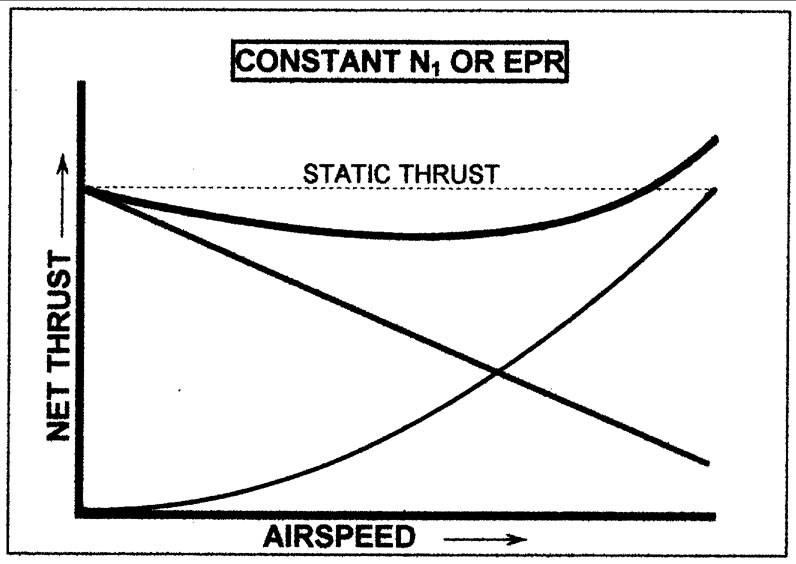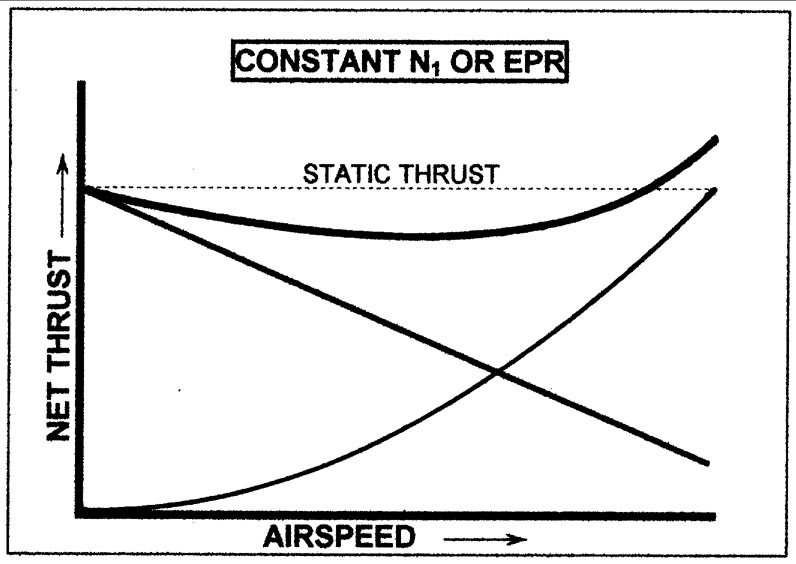I'm interested in how the thrust of a turbofan engine is affected at higher airspeeds (TAS). I know (I believed) that engine thrust(at constant N1) was relatively constant like in the following graph (only slight deviations):
This graph is usually in the books/manuals describing engine performance with reference to speed.
Then I came across the data from CFM56-5C turbofan engine which states that max engine thrust at cruise is approximately 29,360 Newtons while it's max thrust when stationary is 140,000 N. That's almost 5 times more power on the ground than in cruise. Here is the link: How much air, by mass, enters an average CFM56 turbofan engine cruising per minute?
These are apparently contradictory statements or I am missing something. Which one is corrrect and why? Why is engine thrust being changed with speed? Also, on the graph above what are those two curves that when added form a net engine thrust?
After I did a few calculations using the thrust equation (F= mass flow * difference in exhaust and inlet velocities denoted as delta V -> we will disregard the fuel mass flow and assume exit pressure is equal to the free stream pressure thanks to a nozzle) and following data mentioned above in the link, I found out that delta V term in cruise and on takeoff is constant (at full power) and its value is 295 m/s, which states that exhaust velocity of the engine will always be 295 m/s faster from the inlet velocity(for a maximum power setting at any speed). I think that's logical because work done by the engine is used to increase kinetic energy (delta Ek) of the airflow which increases speed always by a constant amount at specific power/N1 setting (of course less power equals less delta V).


